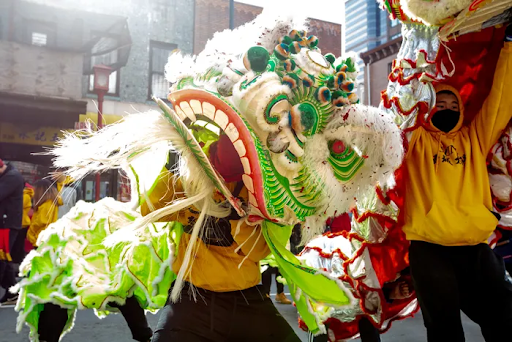Understanding the Lunar New Year and Why It’s Important

Photo courtesy of inquirer.com
On February 1st, 2022, the University of Toronto gave out red envelopes containing incense paper to students on campus to help celebrate the Lunar New Year. However, in Asian culture, incense paper is an item normally burned during ceremonies surrounding death. When this incense paper is given to the living, it can be highly offensive and can imply that you want someone to die.
The university’s administration released a statement later in the week stating that it was not their intention to insult Asian students, but rather to help celebrate their Asian heritage and culture.
The student body was not assuaged. In an open letter to the administration, students called on the administration to be more proactive, rather than reactive, towards forms of racism, including better researching the cultural practices of its Asian population
In order to prevent any future culturally offensive practices, the students also hope that the administration will reach out to Asian groups on campus in the future to help understand their culture better.
With continued social tension and discrimination against Asians during the COVID-19 pandemic, it is important to understand Asian culture and how different each individual truly is. One of the biggest holidays in Asian culture is the Lunar New Year, a holiday that goes by different names in different cultures and is celebrated by billions of people across the globe.
What is the Lunar New Year?
The Lunar New Year is similar to the New Year that is celebrated every year on Jan. 1, except the date is based on the phases of the moon. Thus, the date of the Lunar New Year is different from year to year.
This year’s Lunar New Year began on Feb. 1.
The Lunar New Year is celebrated in many countries, including China, Korea, Vietnam, Indonesia, Malaysia, and Tibet, and by many Asian populations in the United States.
As is true for the traditional Jan. 1 New Year, the Lunar New Year is a time to celebrate the upcoming year with friends and family.
There is no single way to celebrate the Lunar New Year, as each culture has its own traditions.
Usually, people travel back home to spend the holiday with their families in person. In Western society, the Lunar New Year is generally referred to as Chinese New Year, but it is important to understand and to remember that other cultures also celebrate this holiday and in their own ways.
“The term Lunar New Year recognizes the communities outside of the Chinese/Sinophone cultural sphere. In terms of usage, it largely depends on the context. I believe that the significance of holidays lies in the people who celebrate them,” said Dr. Dorothee Hou, a professor at Moravian University whose primary areas of interest are Asian culture and Chinese literature and film. “So, for example, two Chinese or Chinese Americans might not feel the need to correct each other when using the words Chinese New Year (or Spring Festival).”
Hou also acknowledged that referring to the “Lunar New Year” might be appropriate if you’re conversing with someone who celebrates the lunar event but you’re not sure of that person’s cultural background.
“Bottom line is, cultures, as do cultural discourses, change and adapt over time,” said Hou. “So I think our usage of Chinese New Year/Lunar New Year (which I would say that most people are aware of, but don’t quite understand the differences between them) should reflect our recognition, with sensitivity and flexibility, of others’ cultural backgrounds.”
In 1912, when the Republic of China was formed, China adopted the use of the Gregorian Calendar, which indicated that the start of the year was Jan. 1, based on the Earth’s revolution around the sun, rather than a lunar calendar, which is based on the phases of the moon.
However, the government still wanted to designate specific times for their seasonal festivals and holidays based on the lunar calendar, so the Lunar New Year was created. In the Republic of China, it’s also referred to as the Spring Festival in order to show respect to different ethnic groups who celebrate at different times, making the holiday inclusive to everyone.
In Vietnam, the Vietnamese Lunar New Year, known as Tết, generally lasts around three days and follows similar traditions like the Spring Festival in China. During Tết, families gather to celebrate the new year with food, red envelopes, and large firework displays.
In Korea, the Lunar New Year is called Seollal and lasts about three days, and is celebrated through donning of traditional clothing, called hanbok, and the practice of cultural customs.
These customs include sebae, a practice of bowing and paying respect to elders, and the exchange of money is decorative envelopes or silk pouches.
At Moravian University, the Asian Student Union held a Zoom celebration on Feb. 1, providing fun games of trivia and giveaways of plushies and gift cards. Earlier in the week, they also provide free snacks to students in the HUB.
To many students on campus, holidays may be tough, as many are not able to go home to visit family and friends in the middle of the semester, and the social aspect of the holiday is lost. With the Lunar New Year not being a federal holiday in the United States, students at American colleges and universities are not given ample time to properly celebrate their culture.
Not every student is able to easily go home for the holidays, so to help, the Asian Student Union is providing a safe and friendly environment, where students with similar beliefs and cultures can celebrate together.
Happy New Year!
新年快乐!
Chuc Mung Nam Noi!
Sae Hae Bok Mani Ba Du Seo!
🌼🌸🌺Chợ Hoa Tết Phước Lộc Thọ Little Saigon 2021
This is a video is from the Little Saigon San Diego Foundation, showcasing a Tết festival in San Diego. The foundation itself is there to empower the Vietnamese community and to embrace and showcase Vietnamese culture in San Diego.







